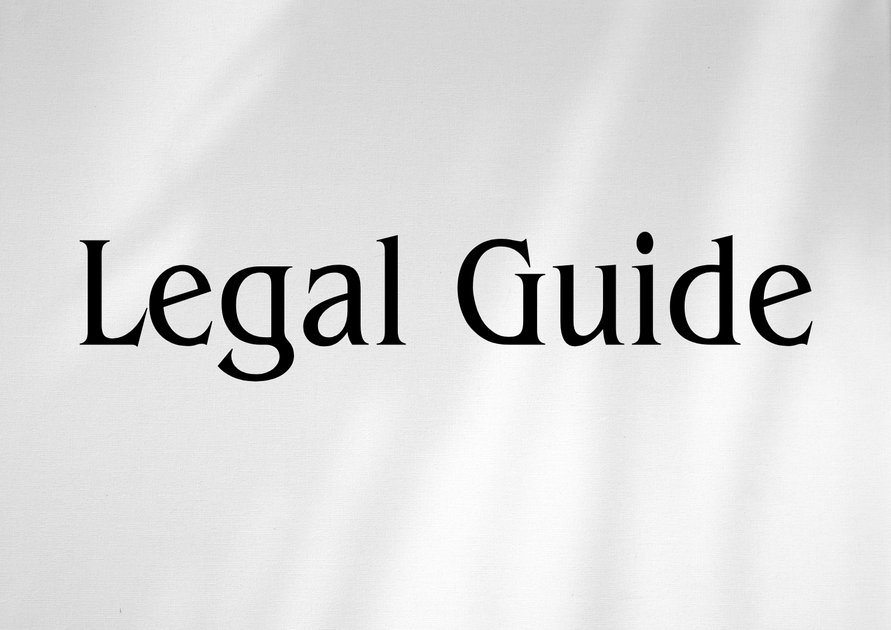Introduction
In the rapidly evolving landscape of global finance, the emergence of Sukuk—commonly known as Islamic bonds—has significantly transformed the capital markets across the Middle East and beyond. Saudi Arabia, with its keen focus on aligning economic development with Sharia principles under Vision 2030, has established a robust legal and regulatory framework for Sukuk issuance. For UAE-based businesses, financial institutions, legal practitioners, and compliance officers, an in-depth understanding of Saudi Sukuk regulations is not only beneficial for cross-border transactions but also crucial for strategic planning, risk management, and optimizing Sharia-compliant financing options.
Recent legal updates and the sustained tightening of compliance norms in the GCC highlight the importance of staying abreast with both UAE and Saudi financial regulations. This article provides a comprehensive, consultancy-grade analysis of the legal landscape governing Sukuk in Saudi Arabia, with comparative insights for UAE law. Readers will gain actionable guidance on compliance strategies, practical considerations, and risk mitigation—ensuring informed decision-making and legal compliance in a complex regulatory environment.
Table of Contents
- Saudi Sukuk Regulatory Overview
- Key Legal Frameworks Governing Sukuk
- Detailed Breakdown of Sukuk Regulations
- Licensing and Issuance Requirements
- Structuring and Sharia Compliance
- Disclosure, Reporting, and Transparency
- Governance and Regulatory Oversight
- Comparison With Earlier Laws and UAE Framework
- Risks of Non-Compliance and Penalties
- Case Studies and Practical Examples
- Compliance Strategies and Best Practices
- Conclusion and Forward-Looking Perspective
Saudi Sukuk Regulatory Overview
Sukuk have become a vital financing tool in Saudi Arabia, supporting numerous large-scale infrastructure projects and corporate funding needs. They provide Sharia-compliant alternatives to conventional bonds, ensuring access to wider investor bases, particularly those adhering to Islamic finance principles. Saudi Arabia has systematically developed its Sukuk legislation to ensure international competitiveness, investor protection, and economic stability.
The primary regulatory authorities overseeing Sukuk in Saudi Arabia include:
- Capital Market Authority (CMA)
- Saudi Central Bank (SAMA)
- Ministry of Finance
The CMA plays a pivotal role in regulating and supervising the issuance, trading, and ongoing disclosure of Sukuk in line with the Capital Market Law (Royal Decree No. M/30 of 31/07/1424H) and follows internationally recognized best practices reinforced by local norms and Sharia requirements. These regulatory structures are crucial for all UAE companies considering investments, listings, or partnerships involving Saudi Sukuk instruments.
Key Legal Frameworks Governing Sukuk
The regulation of Sukuk in Saudi Arabia is based on a layered framework. The following statutes, regulations, and guidelines form the bedrock of Sukuk oversight:
- Capital Market Law (CML) – Royal Decree No. M/30: The core legislative instrument governing all public and private securities offerings, including Sukuk. It details requirements for listing, registration, prospectus, and ongoing disclosure.
- Investment Funds Regulations: Address applicable rules where Sukuk are listed under fund vehicles.
- Sukuk Regulations (as amended by the CMA): Specific rules providing detailed guidance on issuance, minimum content of information, Sharia compliance, and suitability assessments. The most recent amendments (CMA Board Resolution No. 1-41-2019 and beyond) have raised disclosure, reporting, and governance standards.
- Sharia Advisory Guidelines: Outlined by the Shariah Advisory Board, which ensures all Sukuk structures meet Islamic jurisprudence standards and clarifies permissible contractual forms (ijara, mudaraba, murabaha, etc.).
- Anti-Money Laundering (AML) and Counter-Terrorism Financing (CTF) Regulations: Ensures the integrity of capital markets and investor protection.
Saudi laws are meticulously crafted to ensure compatibility with global norms (such as AAOIFI and IFSB standards) while maintaining a unique local and religious context. These regulations are particularly relevant to UAE-based issuers or arrangers seeking access to the Saudi debt market, either directly or through cross-listings.
Detailed Breakdown of Sukuk Regulations
Licensing and Issuance Requirements
The procedures for Sukuk issuance are governed by a blend of legal, regulatory, and procedural stipulations. The principal steps are:
- CMA Registration: All public Sukuk offerings must be registered with the CMA. Issuers must submit a prospectus meeting detailed content requirements (as per Part 5 of the CML and contemporary CMA Rules on the Offer of Securities and Continuing Obligations [OSCO]).
- Approval and Sharia Review: A Sharia-compliant structure must be validated by an approved Sharia Board. Issuers are required to provide formal Sharia certification with transparent documentation.
- Appointment of Programme Agents and Trustees: Entities must engage independent trustees to represent Sukuk holders’ interests, and programme agents to manage administrative and regulatory interaction.
- Ongoing Obligations: Post-issuance, there are requirements for regular reporting, disclosure of material events, and compliance with ongoing governance standards.
Structuring and Sharia Compliance
Sukuk structures must comply with both the letter and spirit of Sharia law. Commonly accepted structures in Saudi Arabia include:
- Ijarah (Lease-Based)
- Mudarabah (Profit-Sharing Partnership)
- Musharakah (Joint Venture Partnership)
- Murabaha (Cost Plus Sale, typically for asset-backed Sukuk)
The Sharia Board, internal or external, must certify that all contractual terms, asset acquisition, cash flow arrangements, and redemption mechanics conform to Islamic law. This review, documented in a Sharia Compliance Certificate, is filed with regulatory submissions. The Saudi model places special emphasis on ongoing oversight to ensure continued compliance—significantly influencing post-issuance management of Sukuk structures.
Disclosure, Reporting, and Transparency
The CMA mandates high standards of disclosure at every stage. Key requirements (per OSCO and CMA Sukuk Regulations) include:
- Public Prospectus: Clear articulation of Sukuk structure, risk factors, financial statements, use of proceeds, and Sharia compliance outline.
- Ongoing Disclosure: Timely reporting of material developments (including defaults, restructuring, or asset substitutions).
- Financial Reporting: Periodic submission of audited statements, in alignment with International Financial Reporting Standards (IFRS) and AAOIFI standards.
- Rating Agency Oversight: Although not always mandatory, Sukuk are commonly rated by authorized rating agencies, and rating downgrades must be promptly disclosed.
Transparency is not only a legal mandate—it is also a practical necessity to attract a broader range of international investors and ensure market stability. GCC-wide convergence in transparency rules enables UAE-based institutions to leverage consistent reporting templates, easing cross-border Sukuk listing and trading.
Governance and Regulatory Oversight
Effective governance underpins the legal structure of Sukuk. Saudi regulations lay down specific rules for:
- Board Responsibilities: Governance frameworks require Boards of Directors to regularly review compliance and communicate with Sukuk holders through established channels.
- Sharia Board Independence: Independence of the Sharia Board is emphasized to prevent conflicts of interest.
- Trustee Powers and Obligations: Trustees must act solely for the benefit of Sukuk holders and are bound by fiduciary duties to monitor underlying asset performance and promptly notify investors of material changes.
- CMA Inspections: The CMA conducts both scheduled and surprise inspections to ensure ongoing regulatory compliance.
In practice, robust governance—including regular performance audits and Board-level compliance attestations—enables issuers to demonstrate their commitment to regulatory best practices, minimizing reputational and legal risks.
Comparison With Earlier Laws and UAE Framework
Over the past decade, Saudi Sukuk regulation has undergone several amendments, especially in post-2017 updates paralleling market sophistication. Key differences between the old and new approaches—alongside comparative notes vis-à-vis the UAE—are presented in the table below:
| Feature | Saudi Arabia (Pre-2017) | Saudi Arabia (Post-2019) | UAE (Federal Level) |
|---|---|---|---|
| Offering Requirements | Basic disclosure, limited detail | Enhanced prospectus, detailed risk & use of proceeds, Sharia certification | Detailed per UAE Securities and Commodities Authority (SCA) Rules, Federal Law No. 4/2000 |
| Sharia Supervision | Issuer-appointed, weak independence | Mandatory independence, ongoing compliance reporting | SCA requires independent Sharia Boards and continuous monitoring |
| Secondary Market | Limited trading, OTC focus | TAWADUL (exchange) listing, improved liquidity | Dubai Financial Market and Abu Dhabi Securities Exchange all support robust Sukuk trading |
| Ongoing Disclosure | Low-frequency, event-driven | Mandatory periodic reporting, real-time event disclosures | IFRS/AAOIFI-aligned, frequent ongoing disclosure |
| AML/CTF Rules | Basic KYC protocols | Stringent AML/CTF, risk-based approach | Advanced AML/CTF per Cabinet Decision No. (10) of 2019 |
Recent improvements in Saudi regulations have greatly increased market confidence, aligning with international best practices and facilitating cross-border participation by UAE and international investors.
Risks of Non-Compliance and Penalties
Strict adherence to Sukuk regulations is mandatory. Penalties for non-compliance may include:
- Financial Sanctions: Fines imposed by the Capital Market Authority, which can escalate in cases of major breaches or repeated offenses.
- Suspension or Revocation of Listing: Non-compliant Sukuk may be delisted from TAWADUL, impacting liquidity and investor reputation.
- Civil and Criminal Liability: Especially relevant in cases of investor misrepresentation, fraud, or AML violations, with responsibilities extending to company officers and directors.
- Investor Claims and Class Actions: Investors may initiate claims for compensation or damages, especially if non-compliance results in losses.
Given the rigor of regulatory oversight—and regional moves to harmonize compliance through GCC-wide initiatives—UAE-based organizations must ensure strict adherence to both home and host country regulations to mitigate reputational and legal risk. For client advisory purposes, a compliance checklist or process flow diagram can assist organizations in systematizing their internal controls. Suggested Visual: Compliance Flowchart mapping the steps from Sukuk structuring to post-issuance reporting for UAE and Saudi issuers.
Case Studies and Practical Examples
Case Study: Real Estate Developer in Riyadh
Scenario: A UAE-based real estate developer seeks to issue Sukuk on the Saudi stock exchange (TAWADUL) to raise SAR 1 billion for a new Riyadh commercial project. The company, though well-versed in Sukuk structures under UAE law, faces extensive new regulatory requirements in Saudi Arabia—specifically surrounding Sharia supervision, prospectus content, and trustee appointment.
Key Points:
- The issuer is required to engage a Saudi-approved Sharia Board, ensuring independent review of all transactional documents—greater scrutiny than in previous years.
- CMA enforces detailed prospectus disclosures, requiring the issuer to prepare bilingual English-Arabic filings in line with international best practices.
- The developer must register with multiple authorities (CMA, Ministry of Commerce, SAMA), appoint a trustee, and set up a reporting infrastructure for ongoing obligations, such as timely disclosure of project milestones and incidents impacting Sukuk value.
Outcome: By proactively engaging local legal counsel and establishing a robust compliance management system, the developer successfully completes the issuance. Investor confidence is strengthened by adherence to independent Sharia review and transparent reporting—key differentiators in the Saudi market post-2019.
Hypothetical Example: Cross-Border Listing
A UAE Islamic bank intends to list a Sukuk previously issued in the UAE on TAWADUL. The following steps are necessary:
- Align existing Sukuk documents with specific CMA rules and local Sharia guidelines.
- Register the offering and prospectus according to Saudi requirements, supplementing UAE SCA filings with Saudi-specific disclosures.
- Implement upgraded AML/CTF controls in line with Saudi risk-based protocols—even if the bank already meets UAE standards.
Lesson: Cross-border listings require a ‘localization’ process, involving regulatory gap analyses and multi-jurisdictional legal reviews to harmonize compliance.
Compliance Strategies and Best Practices
Against the backdrop of Saudi’s evolving regulatory landscape, practical steps can fortify compliance and mitigate legal exposure:
- Early Engagement with Regulators: Proactive consultative engagement with the CMA throughout the transaction lifecycle improves clarity, reduces approval times, and ensures up-to-date compliance.
- Appoint Experienced Advisors: Retain local and cross-border legal teams specializing in capital markets and Sharia compliance; leverage their familiarity with latest regulatory developments and market practices.
- Establish Internal Compliance Protocols: Develop and maintain robust internal policies covering documentation, disclosure, risk assessment, Board and Sharia Board oversight, and AML/CTF procedures.
- Document and Monitor Sharia Compliance: Formalize all Sharia Board resolutions, maintain records of ongoing compliance reviews, and prepare for periodic audits or regulatory inspection.
- Invest in Training: Regular education for management, compliance officers, and staff on new Sukuk regulations and cross-border considerations.
- Leverage Technology: Implement advanced compliance management systems to automate reporting, track regulatory changes, and flag potential non-compliance issues in real-time.
Suggested Visual: Compliance Checklist Table enumerating key legal obligations at each stage—issuance, post-issuance, secondary market, and winding up.
Conclusion and Forward-Looking Perspective
The Saudi Sukuk regulatory environment reflects a sophisticated, dynamic, and increasingly harmonized approach to Islamic finance. For UAE-based organizations, legal practitioners, and financial institutions, comprehending and anticipating the nuances of this framework is vital—not only for compliance, but also for tapping into one of the region’s most dynamic capital markets.
As regulations continue to evolve in response to economic needs and international standards, forward-thinking organizations must adopt a culture of compliance, agility, and proactive engagement. Staying updated with legal reforms, leveraging in-house and external expertise, and embedding robust compliance practices will position your business to capitalize on cross-border opportunities while minimizing legal and reputational risks.
For clients and stakeholders, the message is clear: Saudi Arabia’s regulatory advances offer substantial rewards, but only for those who invest in diligent preparation, meticulous execution, and continuous learning. Monitoring ongoing developments from the UAE Ministry of Justice—and integrating lessons from Saudi’s model—will ensure your Sukuk initiatives remain sustainable and legally secure in the years to come.
For more information regarding Saudi Sukuk regulations, or to discuss a cross-border Sukuk project, contact our UAE-based legal consultancy team for tailored advice and practical solutions.



